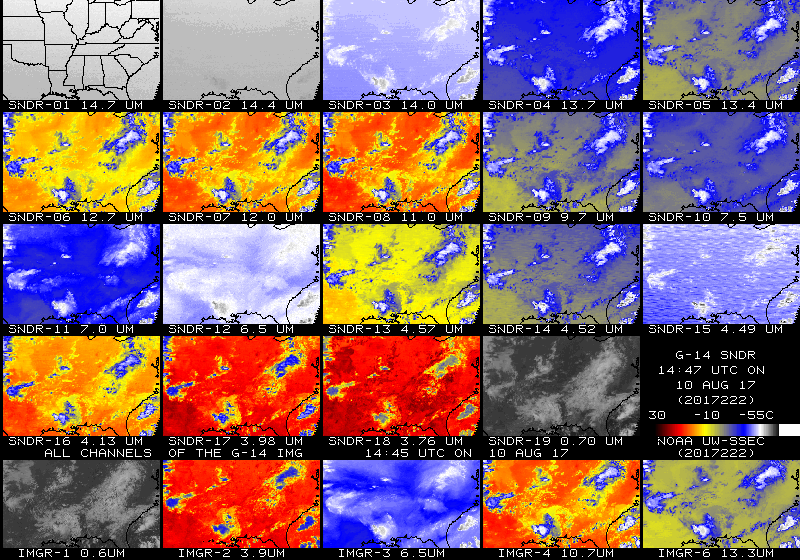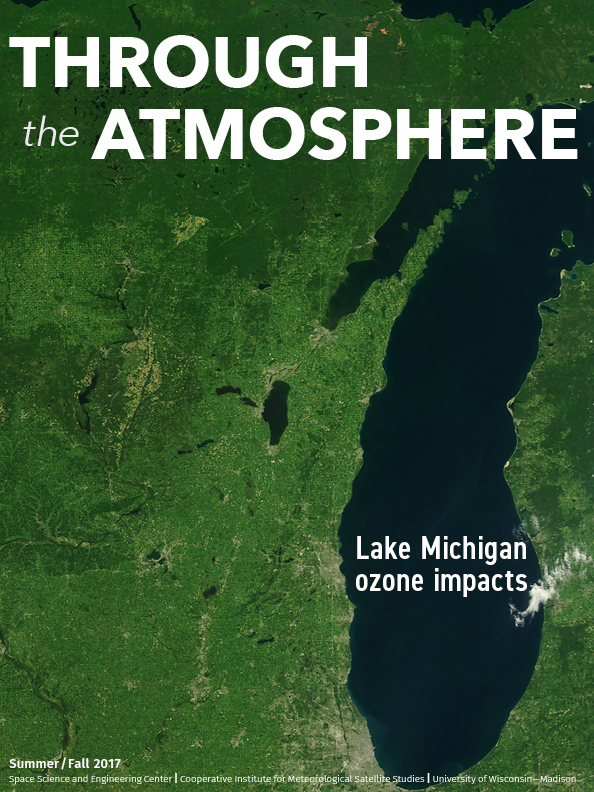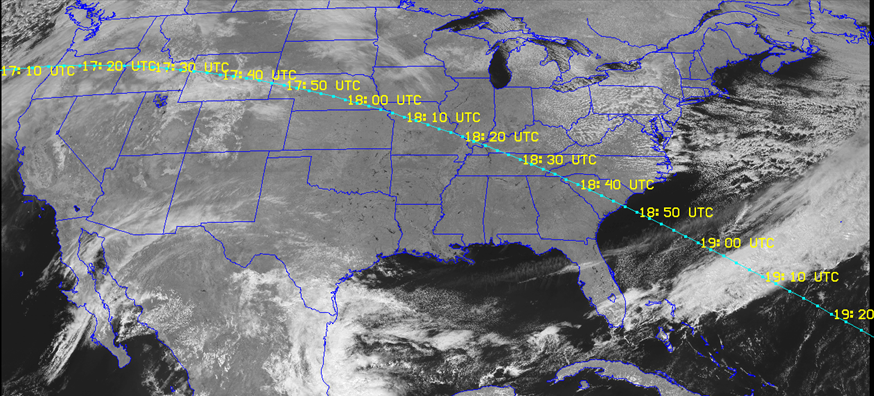
[ Archive ]

 |
CIMSS-NOAA Weekly Report [ Archive ] |
 |
ASPB AND CIMSS WEEKLY HIGHLIGHTS FOR THE WEEK ENDING AUGUST 18, 2017
IN THE PRESS:
ITEMS FOR THE ADMINISTRATOR:
ITEMS FOR THE ASSISTANT ADMINISTRATOR:
ITEMS FOR THE OFFICE DIRECTOR, STAR:
JPSS Annual Meeting: STAR held its annual Joint Polar Satellite System (JPSS) meeting at the NOAA building (NCWCP) in College Park, MD, 14-18 August 2017. The goal of the meeting was to foster connections between the product developers, customers and NOAA management. This was the first meeting since the NOAA Enterprise JPSS Products became operational on July 7, 2017. Advanced Satellite Products Branch (ASPB) scientists Michael Pavolonis, Andy Heidinger, and Jeff Key attended. In addition, Lori Borg, Dave Tobin, Bob Knuteson, Scott Mindock, Yinghui Liu, Xuanji Wang, Aaron Letterly, and Wayne Feltz from the University of Wisconsin Space Science and Engineering Center (SSEC)/Cooperative Institute for Meteorological Satellite Studies (CIMSS) participated in the meeting. Key led the Cryosphere Session; Heidinger led the Cloud Session. (A. Heidinger, E/RA2, 608-263-6757, andrew.heidinger@noaa.gov; J. Key, E/RA2, 608-263-2605, jkey@ssec.wisc.edu)
ITEMS FOR THE DIVISION CHIEF, CoRP:
GOES-14 Imager and Sounder Data at SSEC: From 1647 UTC August 1, 2017 through 1338 UTC August 11, 2017, the on-orbit spare Geostationary Operational Environmental Satellite (GOES)-14 Imager and Sounder instruments were re-activated. The data were ingested by the Space Science and Engineering Center (SSEC) Data Center, within a few hours of being notified that GOES-14 was sending data. The imagery from both instruments appeared nominal. Samples of each of the (19) GOES-14 Sounder bands for the latter portion of the test can be found online at http://cimss.ssec.wisc.edu/goes/rt/viewdata.php?product=gcall. (T. Schmit, E/RA2, 608-263-0291, tim.j.schmit@noaa.gov; Jim Nelson, CIMSS, 608-263-6013)
 (Click image to enlarge)
(Click image to enlarge)
Figure caption: A Geostationary Operational Environmental Satellite (GOES)-14 Imager and Sounder multi-spectral image from August 10, 2017 at approximately 15 UTC.
Through the Atmosphere: Summer/Fall 2017: Stories in this issue feature: improvements to the ProbSevere statistical model, a new method to predict thunderstorm potential, the summer 2017 Lake Michigan Ozone Study, the application of remote sensing techniques to study Saharan dust transport, and the launch of SSEC's RealEarth satellite visualization app. Through the Atmosphere is a biannual magazine of the University of Wisconsin-Madison Space Science and Engineering Center (SSEC) and the Cooperative Institute for Meteorological Satellite Studies (CIMSS): http://www.ssec.wisc.edu/through-the-atmos/.(J. Phillips, SSEC, 608-262-8164)
 (Click image to enlarge)
(Click image to enlarge)
Figure caption: Aqua MODIS image over the Midwest. Credit: SSEC
Preparing for the Great Eclipse of 2017: Preparations were taken to best showcase the Great Eclipse of 2017. This includes an approved research request for 1-minute meso-scale coverage from Geostationary Operational Environmental Satellite (GOES)-16 and a number of web pages that will show the shadows effect on the various GOES spectral bands. An overview is available at http://cimss.ssec.wisc.edu/education/eclipse-2017/, and a list of links is at http://cimss.ssec.wisc.edu/goes/shadow.html. (T. Schmit, E/RA2, 608-263-0291)
 (Click image to enlarge)
(Click image to enlarge)
Figure caption: Coverage path of the eclipse, plotted over a GOES-16 near-infrared image. Note times are in UTC.
VISITORS:
NEXT WEEK:
LOOKING AHEAD:
| Archived Weeklies Page | Submit a report item |